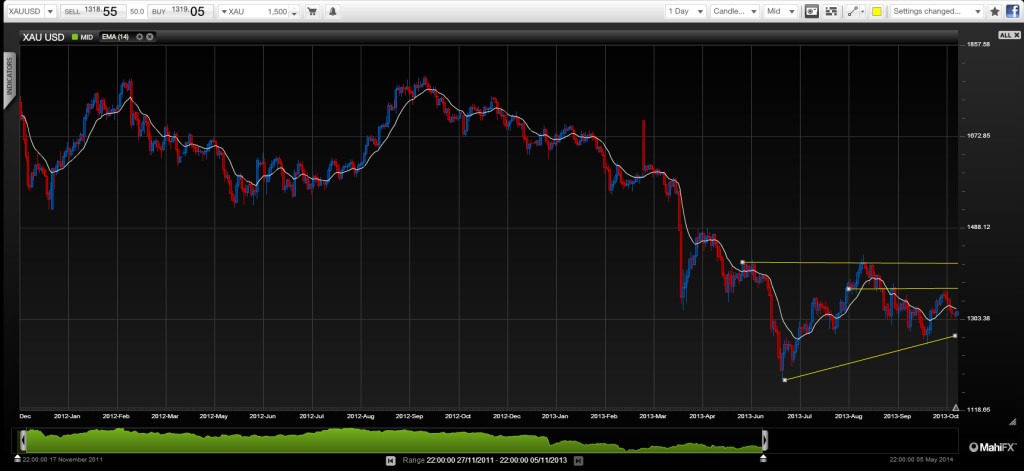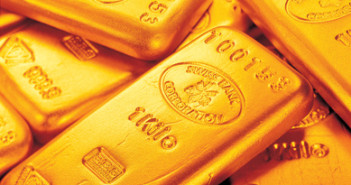There remains a strong case to own gold based on fundamentals. Central banks continue to flood markets with liquidity and uncertainty continues to prevail worldwide. Yet the technicals tell a different story, one that suggests the yellow metal’s best days are probably over in terms of prices.
Geopolitical uncertainty remains acute across the world. The rise of China, the decline of the West, the Eurozone crisis and turmoil in the Middle East are a fertile backdrop for the gold bugs. Now add in a big dose of central bank profligacy and there is a recipe for an epic run up in gold prices.
By Justin Pugsley, Markets Analyst MahiFX. Follow MahiFX on twitter
Yet gold has only responded modestly to recent bullish events – the biggest being plans by the US Federal Reserve to wind down its quantitative easing programme, which have been delayed. Japan’s great re-inflation experiment remains on course. There is even a strong possibility of an interest rate cut by the European Central Bank as the Eurozone economy struggles to grow and is beset by deflationary pressures.
But Asian investors have taken advantage of the price drop this year to accumulate more gold, which has probably helped stabilise prices. However, Central banks, which are key players in the gold market, have on a net basis slowed the pace of their purchases.
Gold – bottoming out or a pause in the bear market?

Was 2011 a repeat of 1980?
The long-term technicals tell a different story. The big spike in prices from 2009 to its peak of $1,921/troy oz. in September 2011 looks remarkably similar, though substantially amplified, to the spike that took place around 1979-1980 when prices topped out at $850/troy oz. After that prices retreated sharply and sank into a bear market that lasted some two decades. History could be in the process of repeating itself and for the time being the trend is downward for gold.
It’s worth noting that economic and geopolitical uncertainty was still rife in 1980 as gold peaked as it was in September 2011. But 1980 was also the beginning of an era of steadily falling inflation and improving economic growth prospects for the developed world. Today, the developed world already has low inflation. The big question is whether or not sustainable economic growth is going to resume.
Massive central bank liquidity has not led to rampant inflation nor that much economic growth. Extreme fear over a global financial meltdown has receded. And at some point quantitative easing will have to stop. When it does it will probably trigger a synchronised bear market across all the major asset classes, including gold.
The next gold bull market could be massive
But it’s not entirely case closed for gold. If western countries are turning Japanese with ageing populations then decades of little or no economic growth beckon. In the absence of major fiscal reforms the markets will one day realise that many developed countries are technically insolvent.
Today that’s not a concern for the markets. But should that change it would probably leave gold as one of the few safe havens left. And if that scenario plays out there simply won’t be anywhere near enough of the stuff to go around as panicking investors flee bonds and wobbly fiat currencies.
